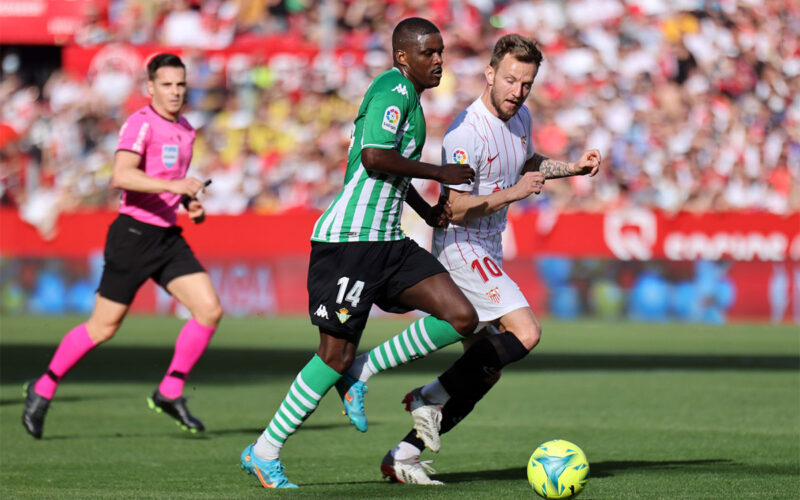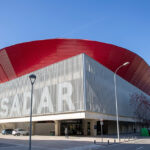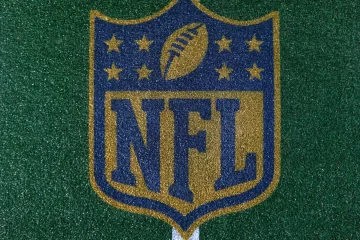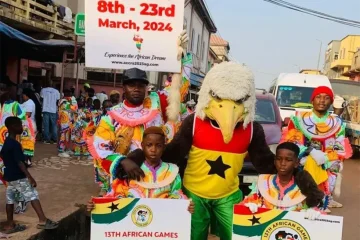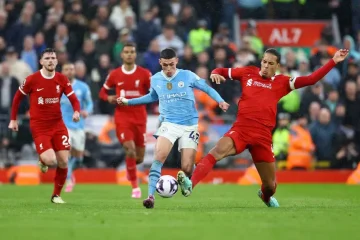MATCH overview: High-flying Real Betis host a Sevilla FC side in need of points in the season’s first El Gran Derbi
Every year, the city of Seville highlights a pair of dates on the calendar: those of El Gran Derbi. It is coming up this weekend and the city will come to a halt as Real Betis and Sevilla FC face each other in LaLiga Santander in a game that, as always, promises to be intense, fiery and entertaining. It is one of the most eagerly anticipated fixtures every season and all residents of Seville, both Béticos and Sevillistas, will come together to watch the action at the Estadio Benito Villamarín.
On this occasion, El Gran Derbi arrives at a time when these teams are going through quite different situations in LaLiga Santander. On the one hand, Real Betis are enjoying a sweet moment in the standings, comfortably sitting in the Champions League places with 23 points from the 12 matches played so far. Meanwhile, Sevilla FC is in a very different situation as Jorge Sampaoli’s side is in the relegation zone and has only managed to pick up 10 points in total since the start of the season. There is, therefore, a significant gap between them right now, a gap that the Béticos will want to widen and one that the Sevillistas are looking to reduce in order to kick-start their campaign.
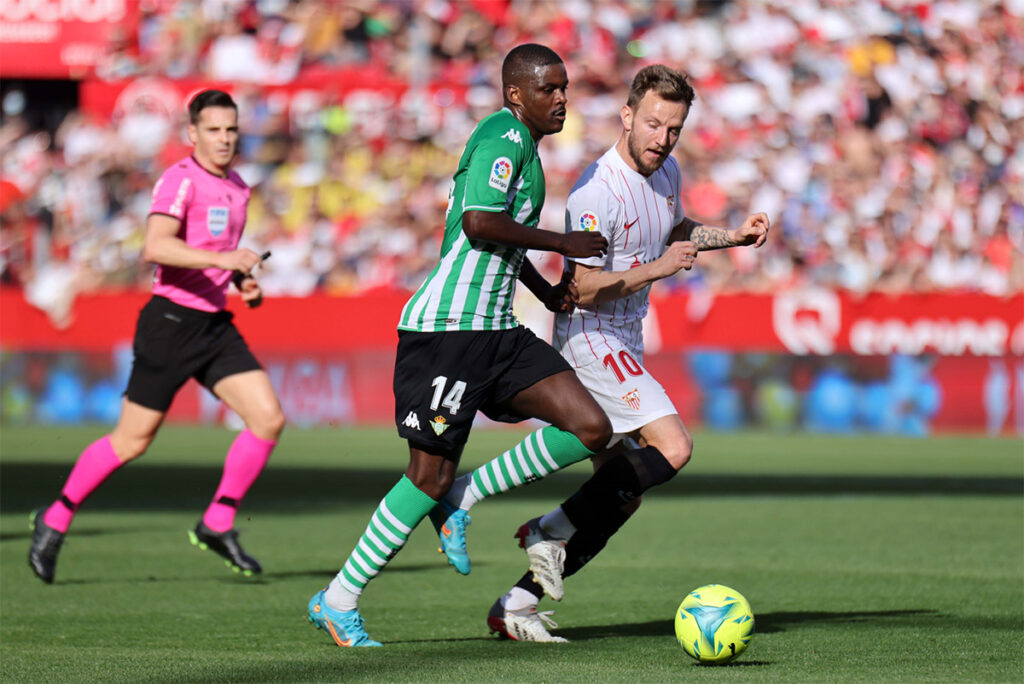
Real Betis’ good start to the season can be explained by their impressive play and the stats of some players who are in great form at the moment. Borja Iglesias has eight goals to his name and is the top Spanish scorer in LaLiga Santander and behind only Robert Lewandowski’s top scorer rankings. Manuel Pellegrini’s side has scored 16 goals in LaLiga Santander compared to Sevilla FC’s 11, even though they have shot less: 98 times compared to Sevilla FC’s 100 shots. However, the Real Betis strikers are displaying clinical finishing.
The goals against stats are where there is the biggest difference between the two teams, explaining the difference in points. Real Betis have let in eight so far, whereas Sevilla FC have conceded 19 goals in the games played so far. Those 19 goals have caused them to draw and lose several games in the first 12 matchdays, with only two victories to their name compared to the seven achieved by Los Verdiblancos.
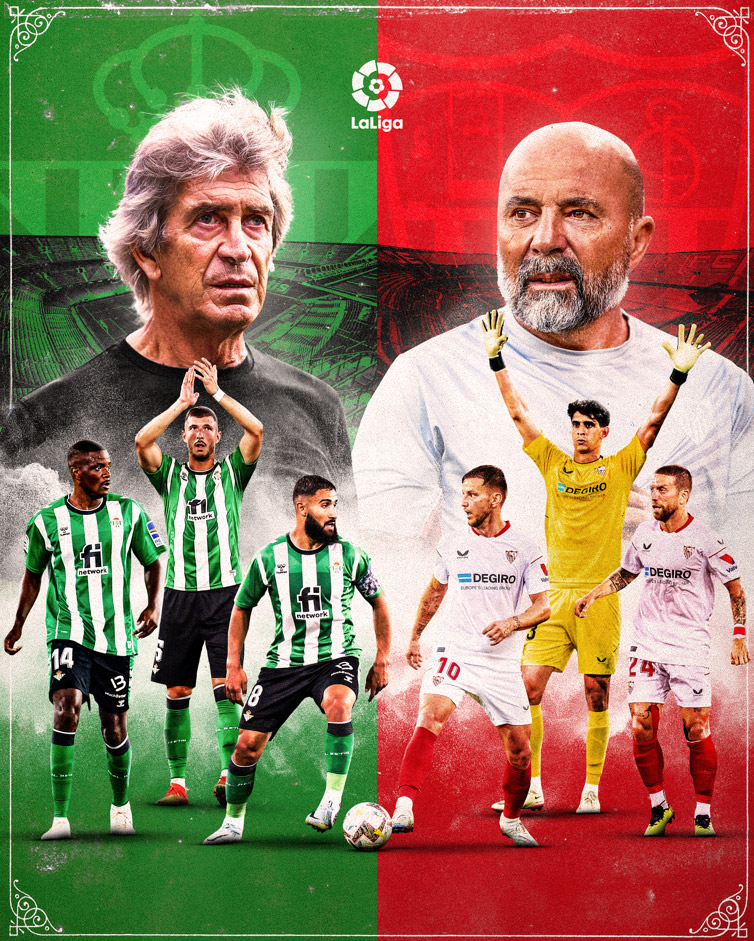
Sevilla FC come into this duel after losing at home to Rayo Vallecano and with the effect of Sampaoli’s arrival dampened a little. Real Betis, on the other hand, have just beaten direct rivals Real Sociedad 2-0 on the road. This weekend, Real Betis are playing at home in El Gran Derbi and can count on the support of their fans as they seek victory.
Whatever happens, the Benito Villamarín will host a spectacle on the night of November 6th. Entire families will be wearing red and white or their green and white stripes, ready to enjoy the football.
Manuel Pellegrini, “The Engineer” of the dugouts, has already written his name into Real Betis history
Real Betis’ Chilean manager, who has coached more than 400 LaLiga Santander games, has been one of the most successful tacticians in the competition this century.
Manuel Pellegrini has won the hearts of Real Betis fans over the past three seasons. Nicknamed “The Engineer” because of his degree in Civil Engineering, he was the architect of the Copa del Rey triumph in 2022, with the club lifting silverware again after a 17-year wait, as well as currently leading the team towards a third consecutive European qualification, which would be a first in the history of the club.
He has been so successful that, in just two seasons and the beginning of this one, Pellegrini has already become the coach with the third most victories for the side in LaLiga Santander (43), as he is now only behind only Lorenzo Serra Ferrer (78) and Ferenc Szusza (46).

The Chilean has been one of the most legendary coaches in LaLiga Santander in the 21st century. That’s because he has coached four Spanish clubs, participating in European competitions with all of them, while he has delighted fans with the way his teams have played. His teams are said to have been built in his image, with Pellegrini boasting extensive experience in controlling the ball.
Back in 1973, he entered the world of football as a player and spent his entire playing career with Universidad de Chile, where he made a total of 451 appearances in his country’s top flight. He even played one game for La Roja in a friendly against Brazil, which ended in a 1-1 draw. After hanging up his boots in 1987, he waited just one year before moving to the dugout, starting at Universidad de Chile in 1988.
After spending 10 years coaching in Chilean football, he went on to have spells in Ecuador and in Argentina. After coaching River Plate and finishing as a runner-up in the Copa Sudamericana, he attracted the attention of Villarreal CF, who hired him for the 2004/05 season.
It was with the Yellow Submarine that he had his first experience of coaching in Europe, in charge of an exciting project. There, he managed to win an Intertoto Cup and to qualify the club for the Champions League for the first time, reaching the semi-finals in Los Groguets’ first season in that tournament. In addition, in 2007/08, they then achieved an impressive second place in LaLiga Santander, which is still their best-ever finish, before Diego Forlán won the Golden Boot as the top scorer in Europe under Pellegrini the following year.
His good work in Castellón led him to Real Madrid, where he stayed for a season and took on the challenge of integrating the new arrivals Karim Benzema, Cristiano Ronaldo, Kaká and Xabi Alonso. Despite not winning any titles, he is remembered by Madridistas as having laid the foundations for the winning cycle they experienced in the following years.
Shortly afterwards, he took on his third challenge in Spain, at the helm of Málaga CF. After a poor start to the 2010/11 season, Pellegrini was asked to captain the ship and achieved a historic fourth place in LaLiga Santander just one year later, earning another LaLiga club their first-ever qualification for the Champions League. That Málaga CF team contained talents such as Júlio Baptista, Ruud van Nistelrooy, Santi Cazorla, Jérémy Toulalan, Joaquín and Isco. That group did well in the Champions League, only falling in the quarter-finals against subsequent finalists Borussia Dortmund, with that tie going down in history for its epic ending.
Following this achievement, Manchester City hired the coach to lead their project as they tried to reach the top of elite European football, and Pellegrini did well thereby winning the League Cup title and the Premier League in his first season, becoming the first non-European manager to win this competition. He spent three seasons in Manchester, before a brief spell in China and then another gig in England with West Ham.
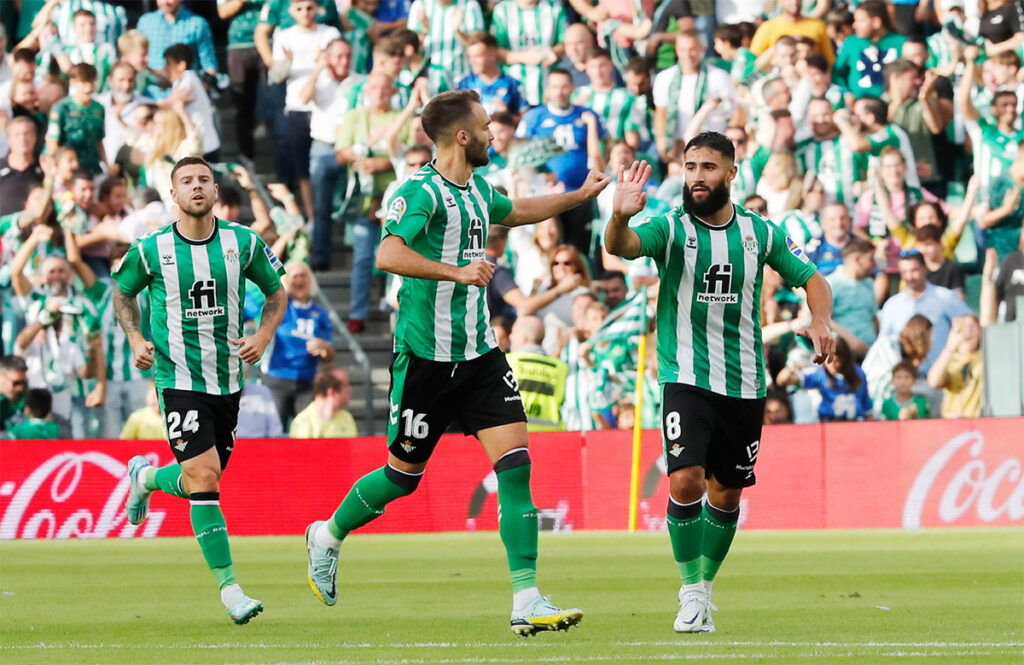
In July of 2020, he then landed at Real Betis, where he is continuing to write his name into football’s history books. So far, Pellegrini has managed to qualify the team for the Europa League in back-to-back seasons and he has lifted the Copa del Rey for Real Betis, 17 years later. He has already cemented his place in the club’s history. Players such as Borja Iglesias, Sergio Canales, Nabil Fekir and Guido Rodríguez have all found their best form under the Chilean coach, and the fans of Los Verdiblancos hope they can keep enjoying this golden era for some time yet.
El Gran Derbi: a history of Real Betis vs Sevilla FC
Seville, the Andalusian capital, is home to one of Spanish football’s most colourful derby meetings, between Real Betis and Sevilla FC. Both among LaLiga’s most historic clubs, and both previous LaLiga Santander title winners, the Seville derby rivalry has divided allegiances and even families within the city for over a century.
A strong British influence existed when organised football was first played in Seville back in the last decade of the 19th century. The first club in Seville was created in 1890, while today’s Sevilla FC was founded in 1905. Real Betis Balompié came into being just two years later.
After many official and unofficial early meetings in competitions as diverse as the Copa de Sevilla, Copa del Duque de Santo Mauro, Andalusian championship and Southern Regional Championship, the two clubs were founder members of LaLiga’s second tier, with Real Betis winning both meetings in the inaugural 1928/29 season, 3-0 away and 2-1 at home.
Real Betis were the first to be promoted to the top flight and won what is to date their only LaLiga Santander title in 1934/35, a title run which included a key 3-0 victory at their neighbours’ Nervión stadium late in the season. Sevilla FC followed up with a title of their own in 1945/46, albeit with no derby win as Real Betis were by then back in the second tier.
In total, the teams have met 116 times in LaLiga between the top two divisions, and one thing that stands out is how often players and fans on both sides have enjoyed victories on their neighbours’ patch. Real Betis spoiled the opening party with a 4-2 victory when the rivals’ current Ramón Sánchez-Pizjuán home opened in 1958. Sevilla FC got revenge with a 4-1 away derby victory just the following year. More recently, Real Betis’ 5-3 win at the Sánchez-Pizjuán in January 2018 is the derby with the most goals in LaLiga history. Last year, Sevilla FC won both meetings in the 2021/22 LaLiga Santander season, but Real Betis beat them in the Copa del Rey on their way to winning that trophy.

Another historic derby was in the 2013/14 Europa League round of 16 with Sevilla FC coming back to draw level at 2-2 on aggregate at the Estadio Benito Villamarín – and then going through 4-3 on penalties – on the way to winning the first of three consecutive trophies.
Only nine players have worn both the verdiblanco and rojiblanco in El Gran Derbi over the years, dating back to defender Joaquín Jiménez Postigo, who won a LaLiga Santander winners’ medal with both clubs. Tough defender Diego Rodríguez famously moved across the divide in 1988 while Spain’s Euro 2008 winning coach Luis Aragonés spent three seasons at Real Betis as a player, while also sitting in both dugouts in derbies.
Local players have also been a prominent feature of this fixture over the years. Look no further than both club captains: Jesús Navas of Sevilla FC and Joaquín of Real Betis. Both came through their clubs’ academies, are standard bearers for their sides and have made over 20 and 30 derby appearances respectively throughout their careers.
Key players, past and present, of El Gran Derbi
El Gran Derbi between Real Betis and Sevilla FC is one of the most passionate and exciting in Spain and in Europe. The love for both clubs’ colours is remarkably strong amongst not only fans but players too. Here are just a few of the most iconic players the derby has seen over the years.
Joaquín (Real Betis, 2000-2006 and 2015-present)
There is nobody who represents Real Betis quite like Joaquín. Not only is he the current captain of the club but he’s a supporter of and a shareholder at Real Betis as well. He has played some epic derby matches over the years, but his most special one might just be the first meeting of the 2018/19 season when he came off the bench to score the only goal of the game 10 minutes from time, provoking absolute delirium in the stands.
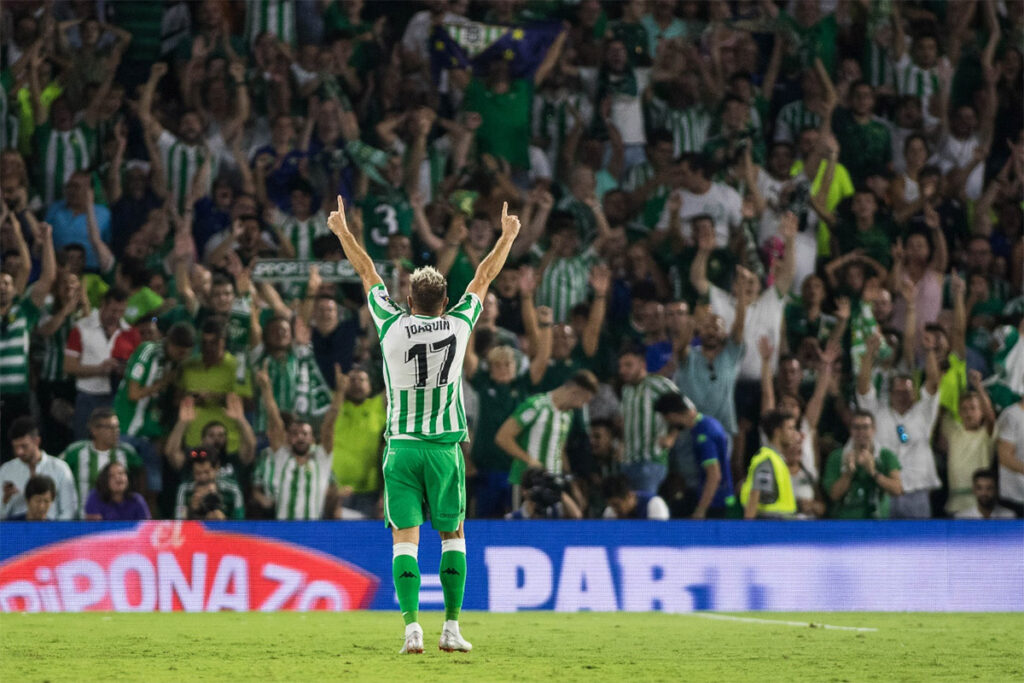
Reyes was to Sevilla FC fans what Joaquín is to the Real Betis faithful. He was one of their own, having come through the Sevilla FC academy and having gone on to star in some special derby moments. The winger, who died in a tragic road accident in June 2019, remains the leading scorer in 21st-century derbies. He played in 17 city derbies for Sevilla FC throughout his career, notching eight wins, seven draws and just two defeats.
Beto (Sevilla FC, 2013-2016)
One of the derbies in which Reyes scored was the 2013/14 Europa League last 16 meeting between these two foes. Real Betis had won the first leg 2-0 at Sevilla FC’s Ramón Sánchez-Pizjuán home before goals from Reyes and Carlos Bacca levelled the aggregate score and took the game to penalties. Step forward goalkeeper Beto to become an El Gran Derbi legend. The Portuguese saved two penalties in the shootout as Sevilla FC went on to win that year’s Europa League. Of all their Europa League triumphs it might just have been the sweetest: they’d defeated their rivals along the way!
Sergio Canales (Real Betis, 2018-present)
Sergio Canales has only played in nine derbies since joining Real Betis in 2018, but he has already scored three goals. One of those goals helped Los Verdiblancos to win the Copa del Rey meeting between these two sides in 2021/22 when Real Betis won 2-1 and ultimately went on to win the tournament.
Dani Alves (Sevilla FC, 2002-2008)
Before joining FC Barcelona, Dani Alves took his first steps in Spanish football with Sevilla FC and became a fan favourite during his six seasons at the Sánchez-Pizjuán. His record in derbies was excellent, winning six, drawing four and losing only two. Despite playing as a right-back, he even netted two goals in these fixtures, with both these strikes contributing to victories.

Luis Aragonés is best known for his success at Atlético de Madrid but he also spent three fruitful years at Real Betis during which time he scored six derby goals against Sevilla FC. His most famous derby outing was a LaLiga Santander meeting in the 1962/63 season when he scored both goals in a 2-1 victory in front of Los Verdiblancos’ home fans. As a manager, he later went on to coach both clubs at different points in his career.
Five things you might not know about El Gran Derbi
This fixture goes back a very long way
The first official derby between these two teams from the Andalusian capital took place in 1915, shortly after Real Betis as we know it today was formed. They earned a 1-0 victory over Sevilla FC thanks to a goal from Alberto Henke and paraded the trophy they were awarded around the city. Unofficially, though, the two sides first faced off on Valentine’s Day 1909. Sadly, the result of that meeting has been lost to history and remains a mystery to this day.
They are two of only nine clubs to ever win the LaLiga Santander title
These two sides rank among the most successful and iconic in Spanish football history. Real Betis secured the city’s first LaLiga Santander title, finishing top in 1934/35 under the guidance of Irishman Patrick O’Connell. Sevilla FC followed up a decade later, edging out FC Barcelona by a single point in the 15th season in LaLiga history.
They famously met at a European competition
As if this derby couldn’t become any more intense, they were once paired with each other in a Europa League knockout tie, the round of 16 of the 2013/14 edition of the continental competition. Fittingly, the tie went to penalties after both had picked up 2-0 wins away from home. The second leg may have been held at Real Betis’ imposing Estadio Benito Villamarín, but the home fans went home disappointed as Sevilla FC won the shootout 4-3 before going on to win the tournament on penalties against Benfica.
José Antonio Reyes heads the derby goal-scoring record in the 21st century
Hometown legend José Antonio Reyes, who tragically died in a road accident in 2019, is the fixture’s leading goal scorer since the turn of the century with five goals. One behind him sits Sevilla FC’s Ivan Rakitić and Kevin Gameiro, while Real Betis have spread their goals more evenly, with midfielder Beñat Etxebarria their top scorer since 2000 with three goals.
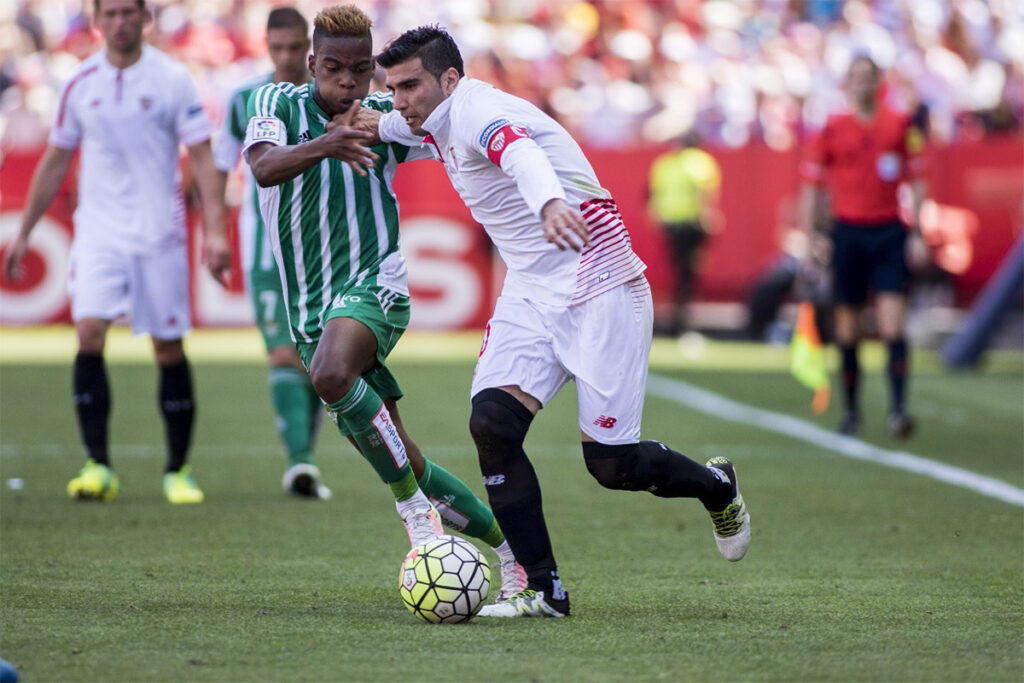
Historians have been arguing for a century over what took place when Real Betis and Sevilla FC met in 1918. What is known is that Sevilla FC won the match 22-0; it’s believed that Real Betis sent a team of youngsters to represent them in protest at a decree which banned two of their star players from taking part due to the fact they were still completing military service.
The Benito Villamarín: “From parents to children, and from grandparents to grandchildren, a passion called Betis”
There are very few cities in the world where the footballing divide is quite as gaping as it is in Seville. With a fierce rivalry dating back over a century, the battle between Real Betis and Sevilla FC to rule the roost in the Andalusian capital serves up one of the biggest grudge matches in LaLiga Santander. Indeed, the two clubs’ raison d’être revolves heavily around the presence of their cross-city foes. It’s often said that the clubs’ fans are born into supporting their team or, as the mid-tier ribbon behind one of the goals at Real Betis’s iconic Estadio Benito Villamarín puts it: “De padres a hijos, de abuelos a nietos, una pasión llamada Betis” (“From parents to children, and from grandparents to grandchildren, a passion called Betis”).
Coined by Andalusian journalist Manuel Ramírez Fernández, this phrase perfectly encapsulates the atmosphere that’s whipped up on a matchday inside the Benito Villamarín, where thousands of fans belt out hearty renditions of “Olé, olé, olé, Betis, olé”, a song that these supporters have grown up with and is central to their childhood, teenage and adult memories. This is a club where the allegiance is passed down from grandparents to parents and in turn on to their children, creating a strong sense of belonging and a fervent passion for the badge in the process. This rich heritage is palpable around the streets of Seville and has been immortalised by the monument that stands proudly outside the ground.
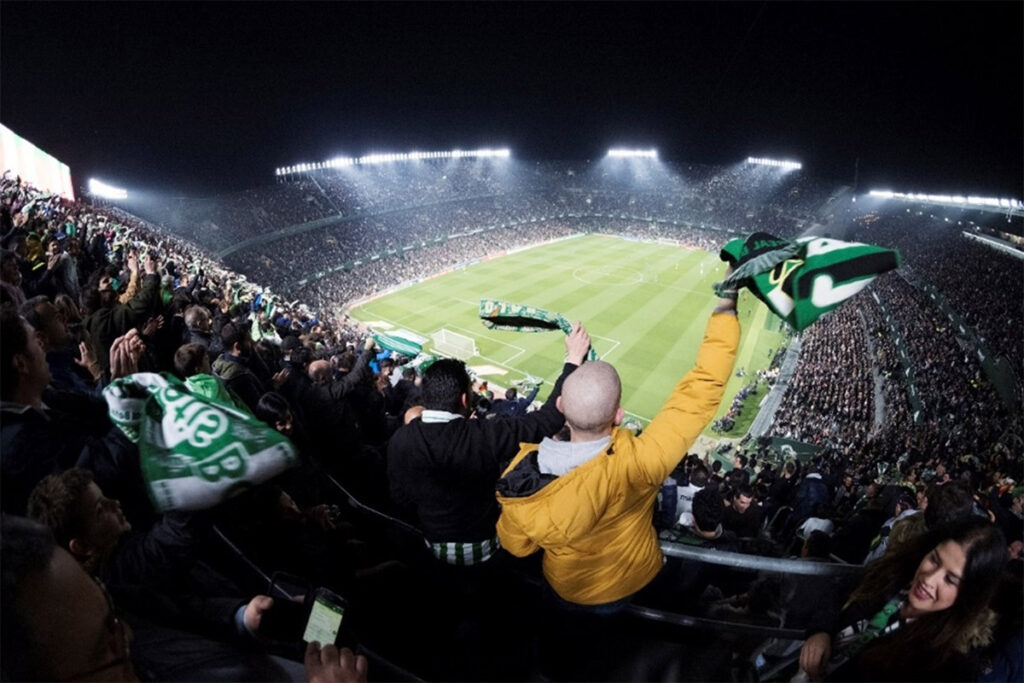
When setting foot inside the stadium, the visitor is immediately struck by how the lush green of the hallowed turf and the white tones of the limestone that surrounds the pitch coincides with the colour scheme in the stands, which are dominated by a Real Betis player who spans the seats of the three tiers behind the goal in the form of a mosaic. According to the club, the player in question “could be any one of us celebrating a goal, it’s a moment of euphoria and glee, which is what we want people to come here and enjoy”. The dimensions of this massive mosaic are matched only by the passion of a fan base and a set of players that battle for victory every time they take to the pitch.
On matchdays, the stands are awash with green-and-white striped flags, whilst the sound of clapping hands and chants reverberate around this magical arena, where the locals are “packed in like cannonballs” (“apiñados como balas de canon”), as another of the phrases inked into a mid-tier ribbon at the Benito Villamarín reads. The moment of truth is here, the hairs on the back of your neck stand up, the ball is in the centre circle and 90 minutes of pulsating action await, during which the only thing on the minds of every member of this model Real Betis family is summed up by the famous Andalusian-accented motto: “¡Viva el Betis, manque pierda!” (“Long live Betis, even if they lose!”).
Green and white passion: the origins of Real Betis’ iconic green and white jerseys
The Benito Villamarín and Celtic Park may be 2,000 kilometres apart, but there is a connection between Real Betis and Glasgow Celtic that is so strong that it has endured over the years. Above all, these Spanish and Scottish sides have something very visible in common: their green and white colours, uncommon in the world of football.
Let’s take a ride back in history, to over a century ago and the world of Manuel Ramos Asensio. Raised in Andalusia, he was sent to learn English in the southwestern Scottish city of Dumfries when he was a youngster. From there, he often travelled to Glasgow to watch Celtic play, making several close friends at the club in the process.
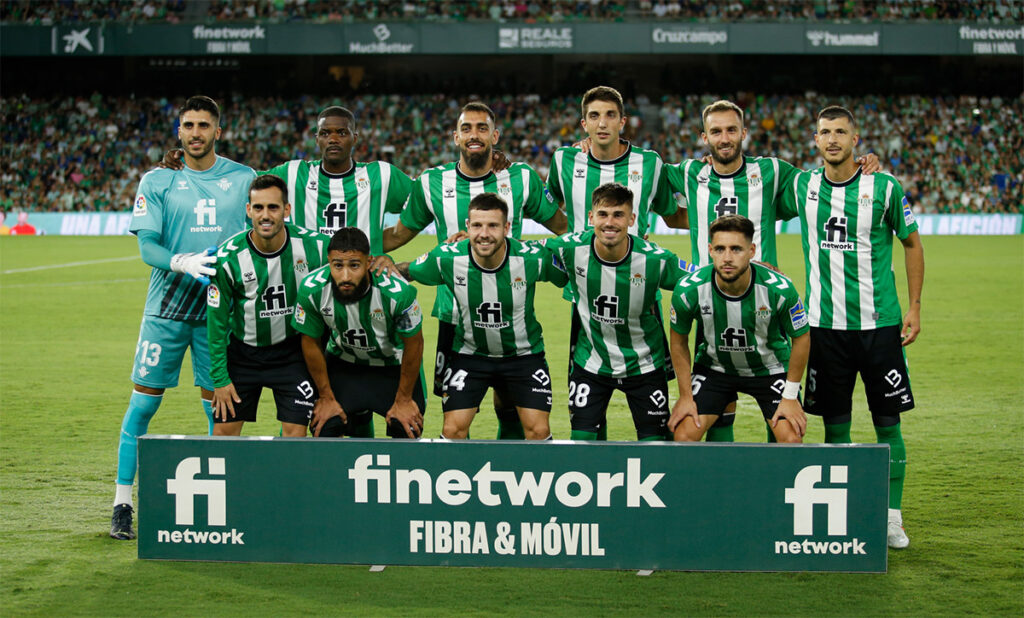
After returning to Andalusia and playing an important role in the early years of Real Betis’ existence in the early 1900s, Manuel organised for green and white fabric to be sent to Seville when Real Betis needed new shirts. Before then they’d usually sported blue and white jerseys, but then switched to green and white, the colours of Manuel’s favourite Scottish team and also, fortunately, the colours of the Andalusian flag.
In order to stand out, Real Betis wore green and white as vertical stripes, unlike the horizontal hoops of Celtic. In a match against Málaga in 2017, though, Real Betis switched to hoops for a one-off match that was taking place on February 28th to mark el Dia de Andalucia, ‘Andalusia day.’
Celtic sent a message of congratulations to Real Betis, remembering their historic connection. In fact, that was one of many messages of friendship that the two clubs have exchanged over social media in recent years. They’ve even nominated each other for various viral social media challenges.
Despite their long history and European pedigree, these sides had never actually met on the pitch… until last season. Their first was an unforgettable 4-3 thriller which saw the LaLiga side run out winners at the Benito Villamarin in the Europa League group stage. Those three points proved crucial in the group run-in, with Betis qualifying for the knockout rounds ahead of Celtic with a game to spare. Their second meeting was another classic, a 3-2 win for Celtic in Glasgow which featured almost 30 shots on goal.
Such a fixture is a truly special one given how passionate the fanbases of these two clubs are. Their two stadiums are of almost identical capacity, of just over 60,000, and both are able to fill almost every seat for each home match. The atmospheres at the Benito Villamarín and Celtic Park rank easily among the most special in their respective leagues and any occasion in which these two sides with so much in common meet on the pitch is an unmissable spectacle. One that would make Manuel Ramos Asensio very proud indeed.

